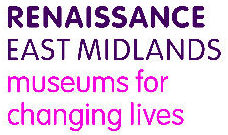
Project Scoping and Planning
Principles
Depending on the scale of the project, certain project planning tools and approaches should be applied since digitisation is likely to be seen as a discrete project, rather than purely an operational process.
Perhaps the first and potentially most useful is to outline the scope of the project. This can be done using mind mapping software which allows you to explore different elements of the project through a web of ideas.
Long-Term Issues
It is important to consider the long-term aspects of any decisions:
- Would it be better to go broader and digitise more objects in a simpler manner, or deeper by digitising at the highest possible quality?
- Might this form part of a strategy to digitise further sections of the collection?
- Are further resources likely to become available to pursue the above?
Factors in Selecting Material for Digitisation
It is important to establish copyright from the outset of your project as this may take a significant amount of time, and influence the viability of the project. If copyright cannot be traced then suitable records should be kept of attempts to establish copyright. You may then choose to publish uncleared material 'at risk'. Legal advice should be sought if you are in any doubt.
Permission
Decisions will be informed by:
- Collection Factors:
- The condition of the objects; their importance and relevance; whether a selection would be sufficient and more realistic than digitising a complete collection; their relationship to other published collections. Is this part of a strategy to publish a certain area of the collection, for instance, and the need to reduce handling while providing access through digital surrogates.
- Human Resources:
- Will staff or volunteers need recruiting and do they have the necessary skills or is there a need for training?
- Equipment issues:
- Should digitisation take place externally through a specialist service? Is equipment available in-house or through a partner?
- Standards:
- What standards are to be used?
- Rights:
- Do you have rights over the material to be digitised?
- Sustainability:
- How will the digital resource be sustained, especially beyond the timescale of the project?
Project Planning Tools
Common project management tools include the following:
- A SMART analysis. Projects should be SMART i.e. Specific, Measurable, Achievable, Realistic and Timebound.
- Project Justification: Why are you doing this?
- Project Plan: Examining resources. A feasibility study may come first.
- Work Breakdown Structure: Defining tasks and sub-tasks.
- PERT (Project Evaluation and Review Technique) model: Analysis of tasks, timescales and interdependencies.
- GANTT Chart (named after Henry Gantt): A table listing tasks set against the project timescale, with milestones.
Involving Your Users/Evaluation
There should be evidence of demand for the digital assets that you are planning to create. This may be available, for example in having a large number of enquiries for a particular collection, if not it should be tested.
In order to ensure that your resource delivers its intended outcomes as effectively as possible, it is a good idea to start with the needs of the end user in mind, basing the design and structure of your resource on how they will use it. If this is a Web site, once you have defined your own objectives (i.e. why you want to do it, what it will help you to achieve), you should consider: (a) Who the site is for and who do you want to use it? (b) What are these users' needs from the site: what will they want to do, and why? (c) How will they be using the site? and (d) What do you want users to get from their visit?
Acknowledgements
 This document has been produced from information
contained within the Renaissance East Midlands
Simple Guide to Digitisation that was researched and written by
Julian Tomlin and is available from
http://www.renaissanceeastmidlands.org.uk/.
We are grateful for permission to republish this document under a Creative Commons licence.
Anyone wishing to republish this document should include acknowledgements to
Renaissance East Midlands and Julian Tomlin.
This document has been produced from information
contained within the Renaissance East Midlands
Simple Guide to Digitisation that was researched and written by
Julian Tomlin and is available from
http://www.renaissanceeastmidlands.org.uk/.
We are grateful for permission to republish this document under a Creative Commons licence.
Anyone wishing to republish this document should include acknowledgements to
Renaissance East Midlands and Julian Tomlin.
